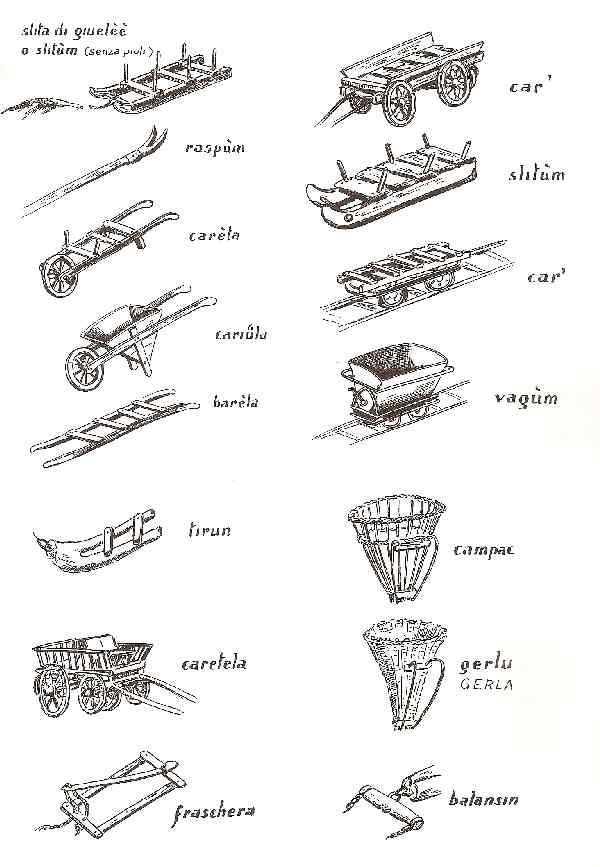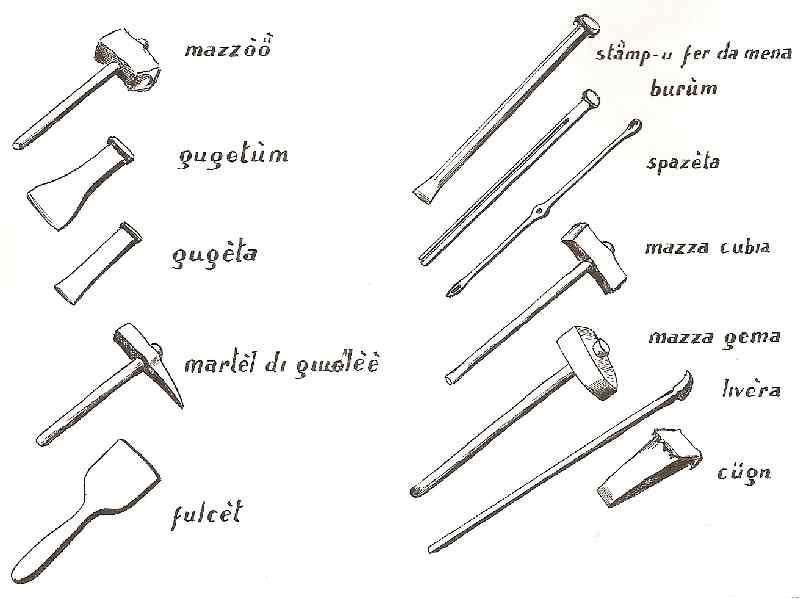 A labourer splitting serpentine stone.
A labourer splitting serpentine stone.
At the tunnel entrance, a modest lean-to hut (teciäda) acted as laboratory and here, the lots were patiently split using sharp chisels and precise blows of the hammer into sheets called “i ciödi” (tile).
The lean-to was not only a space kept for the work on low walls topped by a large stone slab, it also had two other rooms.
One was used as a simple kitchen when they prepared the midday food (unfailingly polenta).
The other was used as a storeroom for their few tools and as a wood store for the fire in the quarry.
All the quarrymen, members of various “companies” who spent their free time at the Giovello quarry to maintain their economy, were essentially farmers and shepherds.
There were many companies and together they formed an important “brotherhood” with social and religious purposes.
The tiles were divided at the end of the day between the members and were piled up, sold individually and transported by carovans of packhorses along the valley road: to the south for those sent to the rest of Italy, to the north for the Grigioni purchasers.
 Means of transport for the material.
Means of transport for the material.
 A quarryman's tools.
A quarryman's tools.
Tradition and documental proof tells us that they were already trading the tiles outside the valley in the early centuries after the year one thousand.
They were commonly used in Sondrio in 1300, and then by other villages in the Valtellina as a 16th century document shows.
Other sources tell us they were already being transported in the Grigioni areas in the centuries prior to 1700, and even reached as far as Coira and its surrounding areas.
Working the tile continued for centuries without change until the end of 1600, when the "black powder" was introduced at Giovello.
This explosive had a modest shattering effect, which scissile rock requires.
It was used to replace fire and benefitted the work immensely.
The use of the explosive brought risks, however, as it was sometimes handled uncautiously and some paid the price with their life.
Towards the end of the nineteenth century, the poor internal lighting using fire and oil was replaced by more modern equipment, first by oil lamps and then by acetylene lamps.